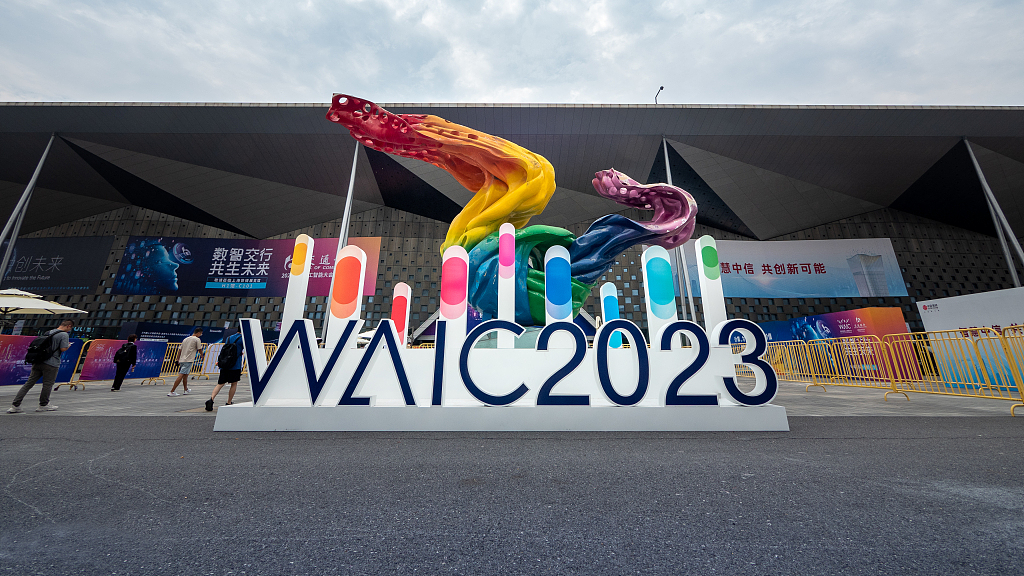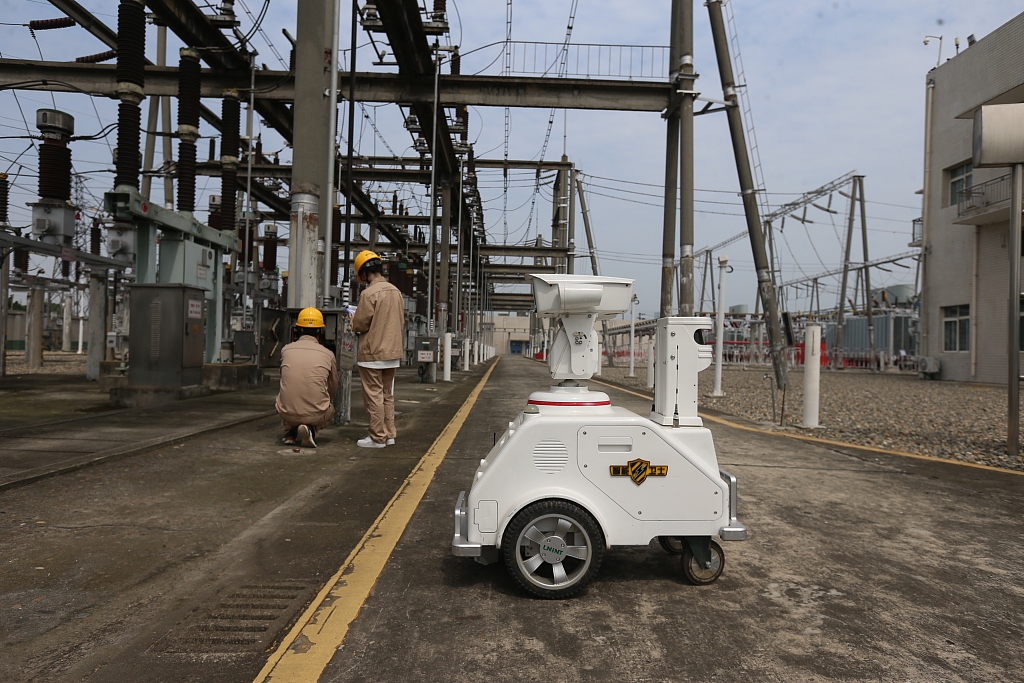
The World Artificial Intelligence Conference opens in Shanghai, east China, July 6, 2023. /CFP
The World Artificial Intelligence Conference opens in Shanghai, east China, July 6, 2023. /CFP
Editor's Note: Lu Jianfei is a senior consultant and specializes in energy, SOE reform and corporate governance. She holds a doctorate in management from the Renmin University of China. The article reflects the author's opinions and not necessarily the views of CGTN.
The World Artificial Intelligence Conference 2023 (WAIC 2023) is held from July 6 to 8 in Shanghai, China. The conference continually plays the roles of "technology leader, application showcase, industry accelerator and governance council" to facilitate worldwide cooperation in artificial intelligence technology. AI is the simulation of human intelligence using various machines to create intelligent software and hardware which can replicate human behavior. By combining computer science and robust datasets, AI has improved operational efficiency and performance in many industries.
According to Statista, AI has the potential to support organizations to achieve 11 to 45 percent of their Economic Emissions Intensity (EEI) reduction by 2030. As called for in the Paris Agreement, net zero need to be reached by 2050, which drives the energy industry to enhance efficiency. And the International Energy Agency (IEA)'s Sustainable Development Scenario (SDS) forecasts that energy efficiency will be responsible for delivering more than 40 percent of the reduction in energy-related greenhouse gas emissions by 2040. Consequently, AI is critical to improving energy efficiency under the blueprint for achieving international climate and energy goals.
AI has been paving the way to energy efficiency improvement through the optimization of renewable energy forecasting and grid operations, coordination of distributed energy assets and demand-side management, and materials innovation and discovery. Take peak time load prediction as an example. It is a critical part of maintaining power network operation because surging energy demand could easily give rise to power blackouts. As one of the traditional technologies for load forecasting, historical analysis based on data on power consumption, time of day and customer behavior is widely used.
However, it has limitations as it leaves out factors that might affect power use, such as weather changes, technology improvements and unexpected power demand fluctuation. Though the traditional peak time load prediction technology has limitations, they are still applied in many energy management systems. AI opens new possibilities to optimize peak time load prediction. It enables power management systems to analyze significant volumes of data from several sources, including weather forecasts, public media and smart meters. More specifically, through examining power consumption data, AI is able to find trends in power use based on variables like temperature, day of the week, and time of day. And the future trends of some areas' power usage would be accurately anticipated by utilizing these data.

A 5G smart robot and operations engineers inspected the power supply equipment in Meishan, southwest China's Sichuan Province, July 6, 2023. /CFP
A 5G smart robot and operations engineers inspected the power supply equipment in Meishan, southwest China's Sichuan Province, July 6, 2023. /CFP
Apparently, great benefits will be brought by AI-based peak time load prediction. High accuracy is one of the main advantages. The IEA report shows that AI-based energy management systems can reduce peak demand by up to 10 percent and reduce overall energy consumption by up to 15 percent. Power management systems with AI technology can streamline energy use and avoid sudden blackouts.
Moreover, AI-based peak time load prediction can boost energy production efficiency. Power providers can cut down wasteful energy production based on power load prediction and store up productivity for peak time. This can facilitate business companies to lower their carbon footprint and reach their environmental goals. Lastly, AI-based peak time load prediction can monitor power usage in a real-time way. Energy managers can locate potential problems and act before they cause blackouts or disruptions. Real-time monitoring could also help businesses identify potential aspects in which they can improve energy use efficiency.
Driven by growing energy production and consumption worldwide, the AI-based energy efficiency management market has been boosted. Per Fortune Business Insights, the market size will expand at a compound annual growth rate of 21 percent from 2022 to 2030, projected to reach $2,025.12 billion by 2030. AI technology is expected to continually enhance traditional energy industry workflows by delivering better data analytics, more efficient energy generation and distribution, reduced reliance on non-renewable energy sources, and advanced waste management strategies in the future. This would fuel the energy industry not just from brawn to brains but in a never imagined way, conducive to achieving the energy industry's goal – a more efficient, connected and sustainable future.
(If you want to contribute and have specific expertise, please contact us at opinions@cgtn.com. Follow @thouse_opinions on Twitter to discover the latest commentaries in the CGTN Opinion Section.)